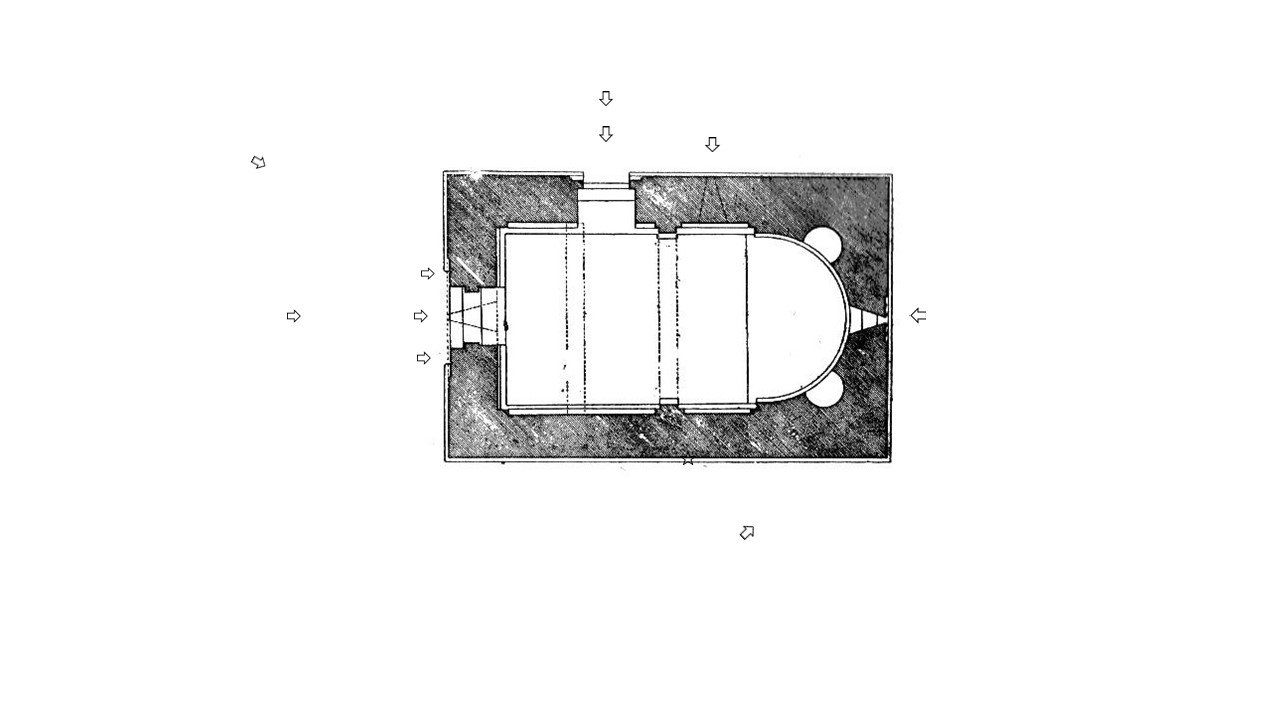Nato Chitishvili
The church of St George is located near the village of Daba in the region of Samtskhe-Javakheti in south-central Georgia. According to the inscription on the tympanum of the west wall, the church was built in 1333 during the reign of King George V, the Brilliant. The donor of the church was the head of the royal treasury, but his name is not mentioned in the inscription; nor is the name of the architect.
In 1256 Georgia became part of the Mongol Empire. In 1260 David Narin, king of western Georgia, managed to separate western Georgia from Mongol-controlled eastern Georgia. David Ulu, king of eastern Georgia, also decided to join David Narin in rebellion, but he was defeated and once again submitted to Mongol rule. The next eastern Georgian king, Demetre the Devoted, father of George the Brilliant, tried to revive his country but was suspected in a failed coup against the Mongols. In order to save Georgia from invasion he had to surrender and was executed by the Mongols in 1289. Mongol rule in Georgia lasted until the late 1320s-30s. King George the Brilliant managed to restore the kingdom of Georgia for a brief period. In 1330-31, he conquered Imereti uniting all of the Georgian kingdom. But its unity was finally shattered and by the end of the 15th century Georgia had again disintegrated due to Amir Tamerlane’s invasions.
What is noteworthy about this single nave church is its façade decoration. Ornamentation on the façades is concentrated around windows and portals. The repertoire of ornament consists of patterns that on the one hand were very popular in medieval Georgian architecture, beginning from the 10th century, and that on the other hand were very familiar in Seljuk façade decoration.
The southern portal with a rectangular opening for the doors has an ornamented arched frame confined by two toruses with a horizontal right-angled bend towards the door in the lower part. In the tympanum there is a cross and one rosette on each side of the cross; around the portal runs the scallop. On the whole the structure of the portal and also some of the ornament used here closely resembles the north portal at Sapara monastery, built in around 1300.
The western portal has a different arrangement: here, the arched ornamented frame of the door is confined within a rectangular framing. This element, as well as the horizontal right-angled bend towards the door in the lower part of the torus is a typical architectural element of Seljuk and also of Armenian architecture. These elements appeared in Armenian architecture beginning from the 12th century, but they became particularly popular in the 13th and 14th centuries (Sanahin, Makaravank, Geghart, Ovanavank). In Georgia toruses bent at a right angle can be seen only from the late 13th century and the turn of the 14th century (Sapara, Zarzma). The rectangular framing of the western portal of the church is a rare example of its kind in Georgian architecture. Also unusual in Georgian ornamentation is the meander running around the portal and the combination of rhombs creating the cross type patterns. The latter is unknown in Georgian decoration but common in Armenian churches dated to the 13th century (Hovanavanq, Sagmosavank).
Thus the ornamentation and façade decoration of Daba church on the whole are tightly connected to the first half of the 14th century. The church is a good example of how typical Georgian medieval decoration was combined with motifs known in Seljuk and Armenian architecture.
Interactive Plan

Image Gallery
Bibliography
- Shmerling, Postroika Molaret-Ukhutsesa Tsaria Georgia Blistatelnogo v sel. Daba, Bordjomskogo Raiona, Ars Georgica, N2 (Tbilisi, 1948), pp. 111-122 (in Russian).


